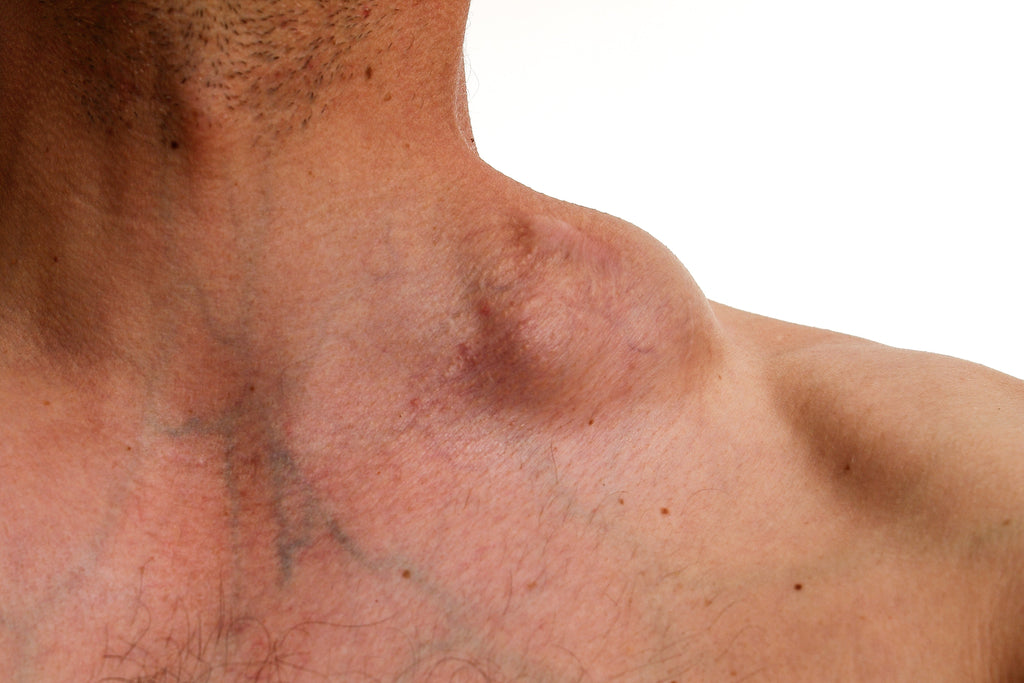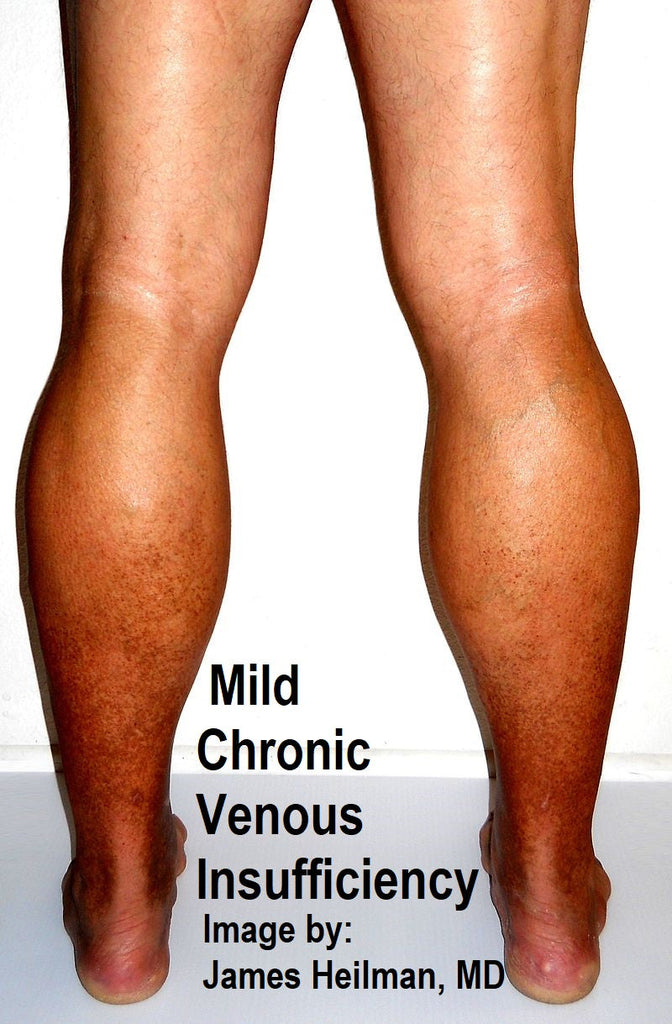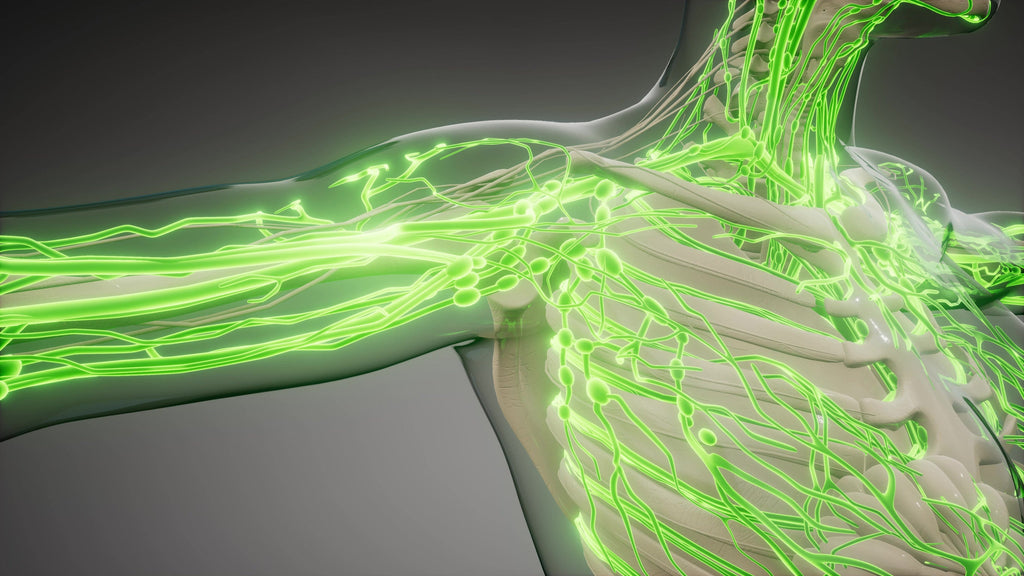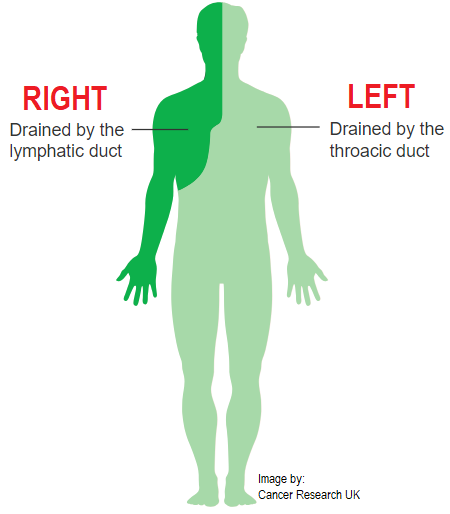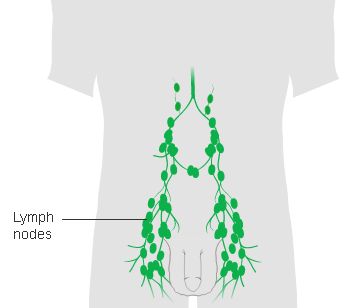By Selena Belisle, CE Institute LLC
The human body is made up of hundreds of lymph nodes. They filter harmful substances such as viruses and bacteria from our lymphatic fluid (aka lymph), before it enters the cardiovascular system. Lymph nodes are an important part of our natural defense system or human immunity.
Unfortunately, lymph nodes are a common place where cancer spreads as well. That’s why oncologists regularly biopsy a sentinel node in the same region as other cancers, to determine if an existing cancer has metastasized.
In the medical illustration below, the lymphatic system is represented in red in the human body. The little bean shaped balls on the lymphatic vessels represent lymph nodes in various regions. Clusters of lymph nodes are commonly found within the joints of the skeletal system:

Swollen lymph nodes typically exhibit themselves within lymph node regions, which can be viewed on the following medical illustration of the lymphatic system:

Lipomas are fatty lumps that form under the skin and usually over the muscle. While all abnormal growths are cancers by definition, lipomas are not harmful and do not metastasize like a harmful cancer might.

Telling the difference between a swollen or damaged lymph node versus a lipoma can be difficult, because they are visibly similar in size, shape and texture under the skin. Both could cause an obstruction of circulation, with the swollen lymph node being medically worse of the two, especially if it is a sentinel node. In some cases, swollen or damaged lymph node(s) can lead to a condition called lymphedema.
Medical institutions may claim that lipomas are softer and more mobile under the skin than a damaged lymph node; however, with almost 40 years of tactile palpation skills, I can state that it's impossible to determine the difference between the two by viewing or feeling them. They're both usually quite firm or hard, and neither is very mobile under the skin either.
Pressing on either may or may not cause pain, and is ill-advised regardless of what the diagnosis is. It is contraindicated to apply pressure on abnormal growths/cancers or any form of swelling, especially while the skin remains intact. Removing a damaged lymph node or lipoma would require surgery with sterilization methods to prevent infection and other medical problems.
You likely wouldn’t know the difference between a swelling lymph node or lipoma without a client telling you, or a medical diagnosis. Lipomas often develop slowly over time, while a swollen lymph node might appear more quickly, due to trauma or an acute infection.
Lymph nodes can also temporarily swell when they’re exposed to harmful viruses, bacteria and other agents, as the immune cells multiply within the nodes to kill the infection. This would be different from a permanent swelling of a lymph node which may appear visually similarly to a lipoma.
Here are some examples of each:
The picture at the top of his article depicts swollen lymph nodes, and here are some more images of swollen lymph nodes below around cervical area:












